H.G. (Henry) Glyde RCA (1906-98)
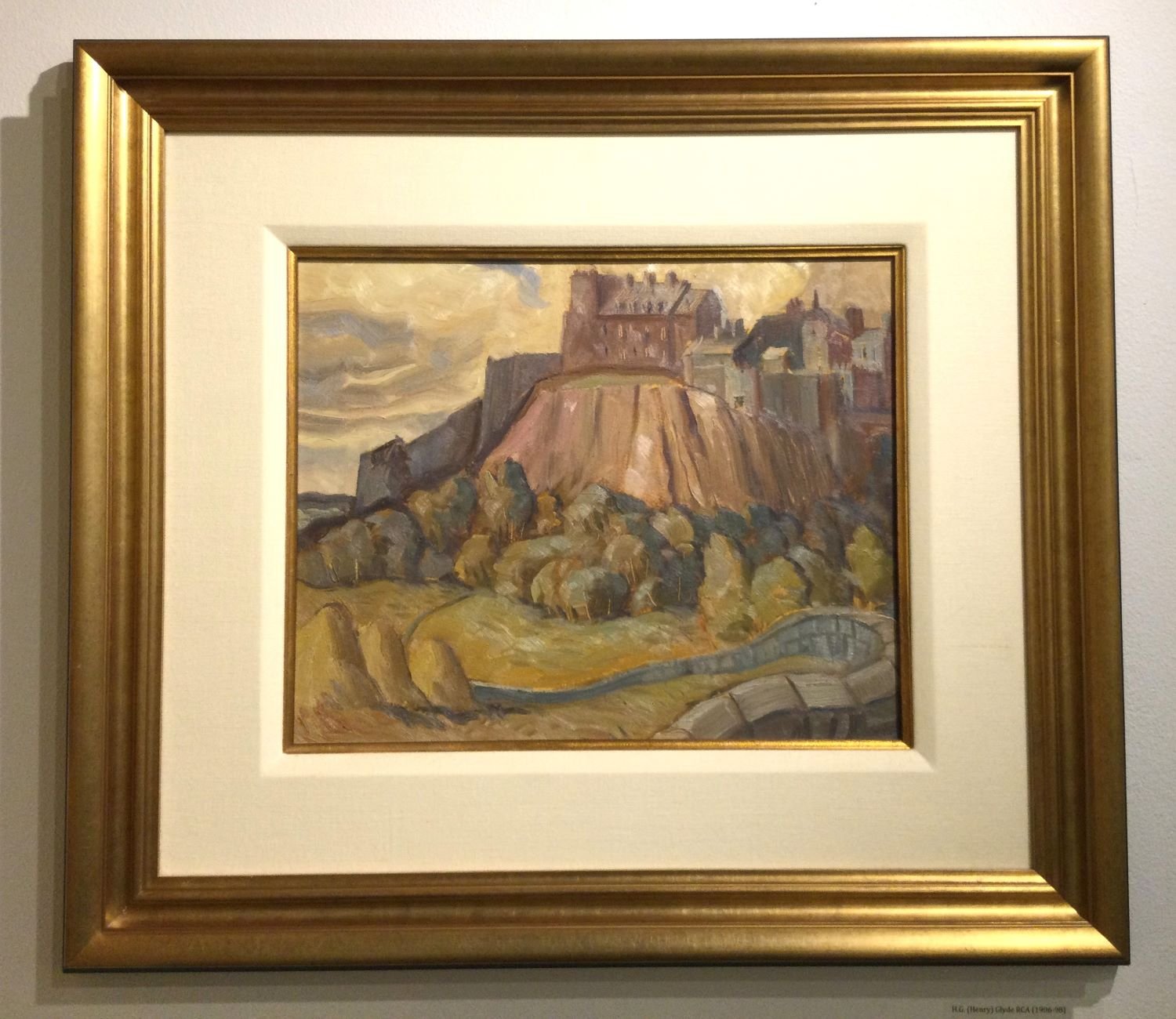
Outside The City Walls (considered Stirling Castle), 1950, oil on panel, 13x16 inches (33 x 40.5 cm), framed, $12,000.00 Cdn.
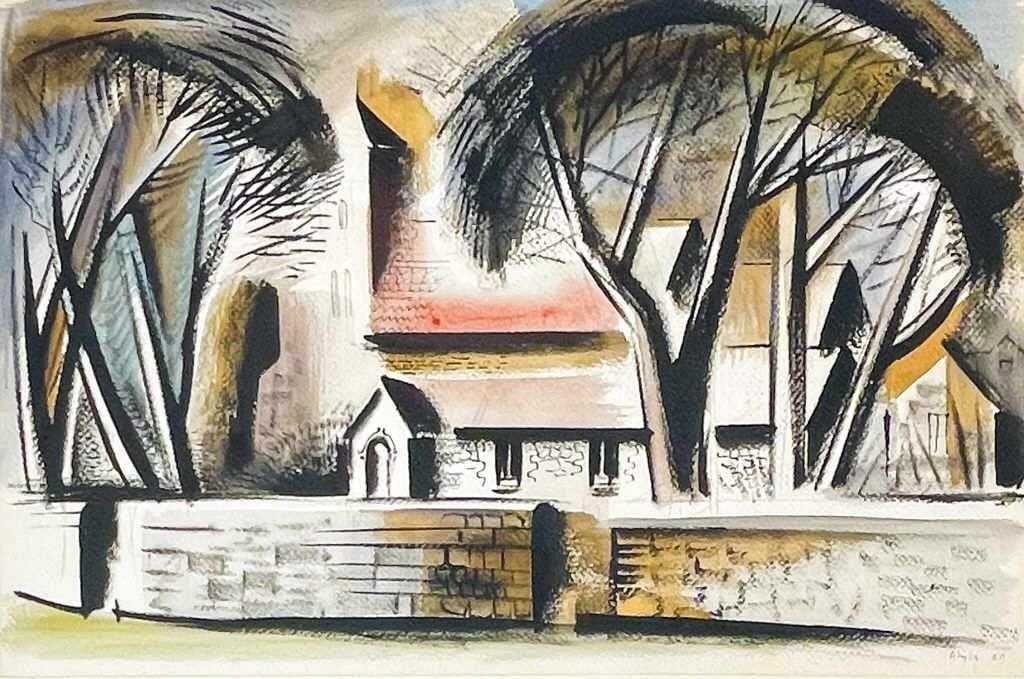
Sussex Church, 1959, watercolour and ink on paper, 15 x 21.5 inches (56 x 76 cm), signed & dated l.r., titled verso, Provenance: private collection Edmonton, original framing, $3200.00 Cdn.
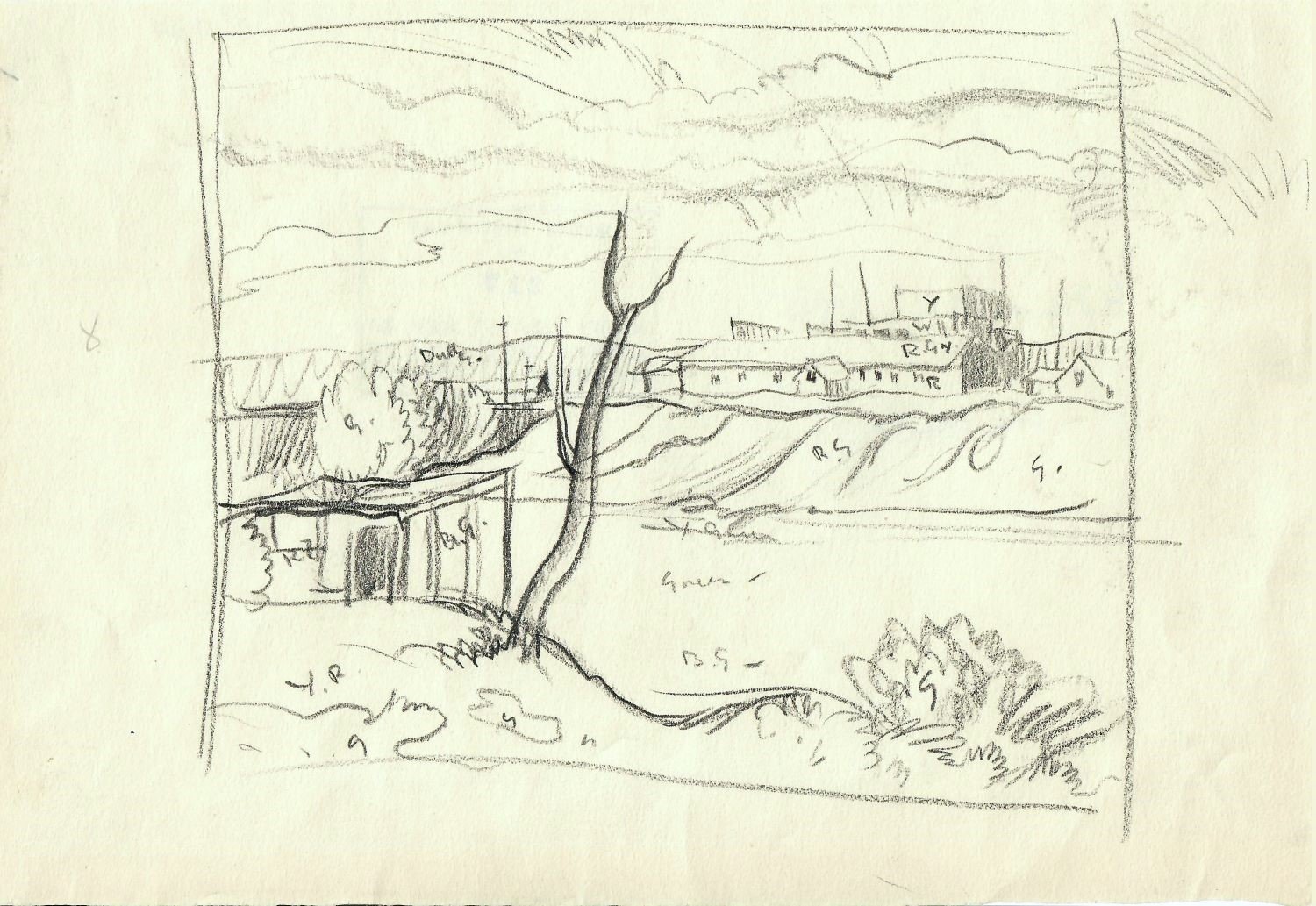
Edmonton (G1734), 1945, graphite on paper, 7.5 x 10.5 inches (19 x 27 cm), framed, $1200.00 Cdn.
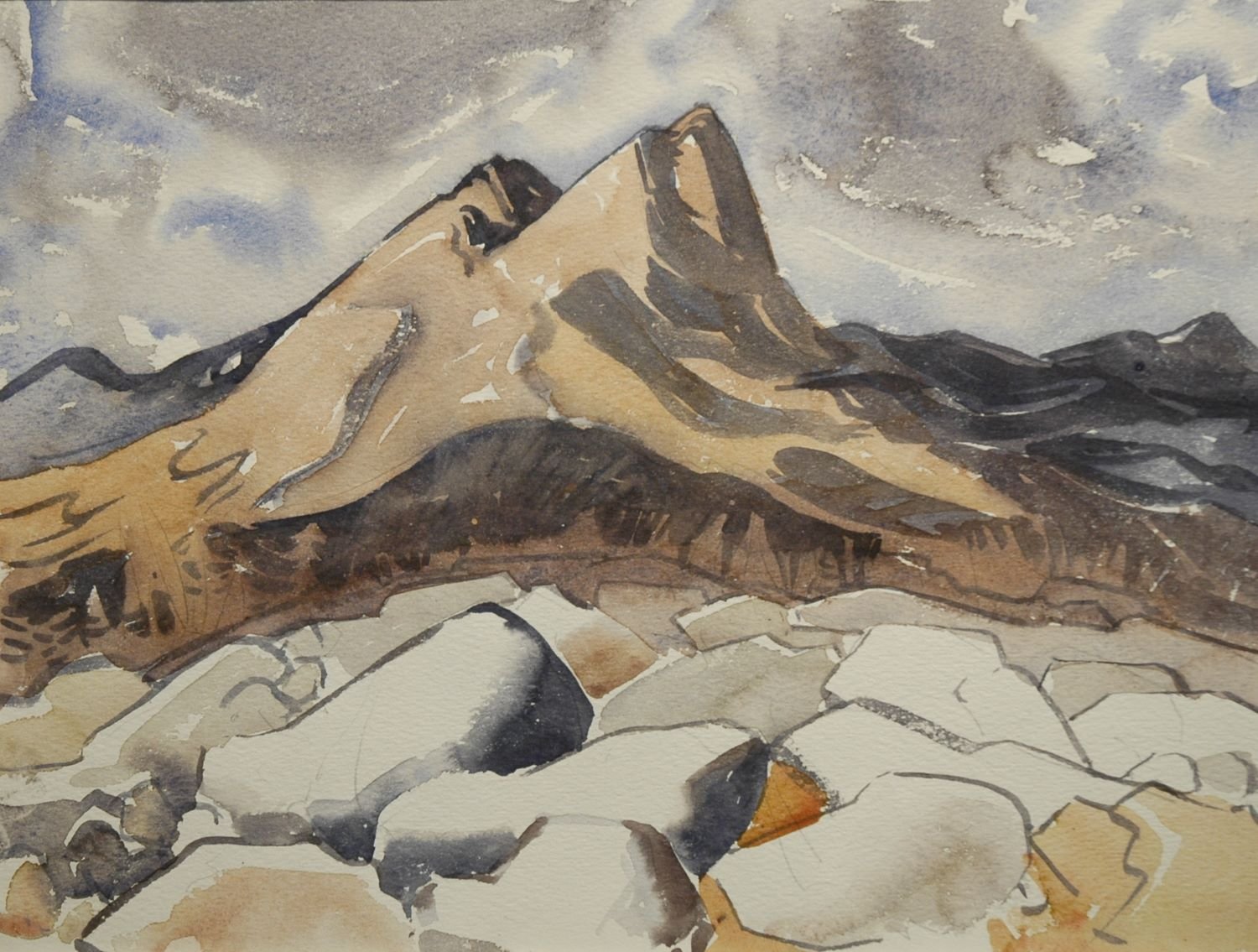
untitled (Rockies), c.1968, watercolor on paper, sold.
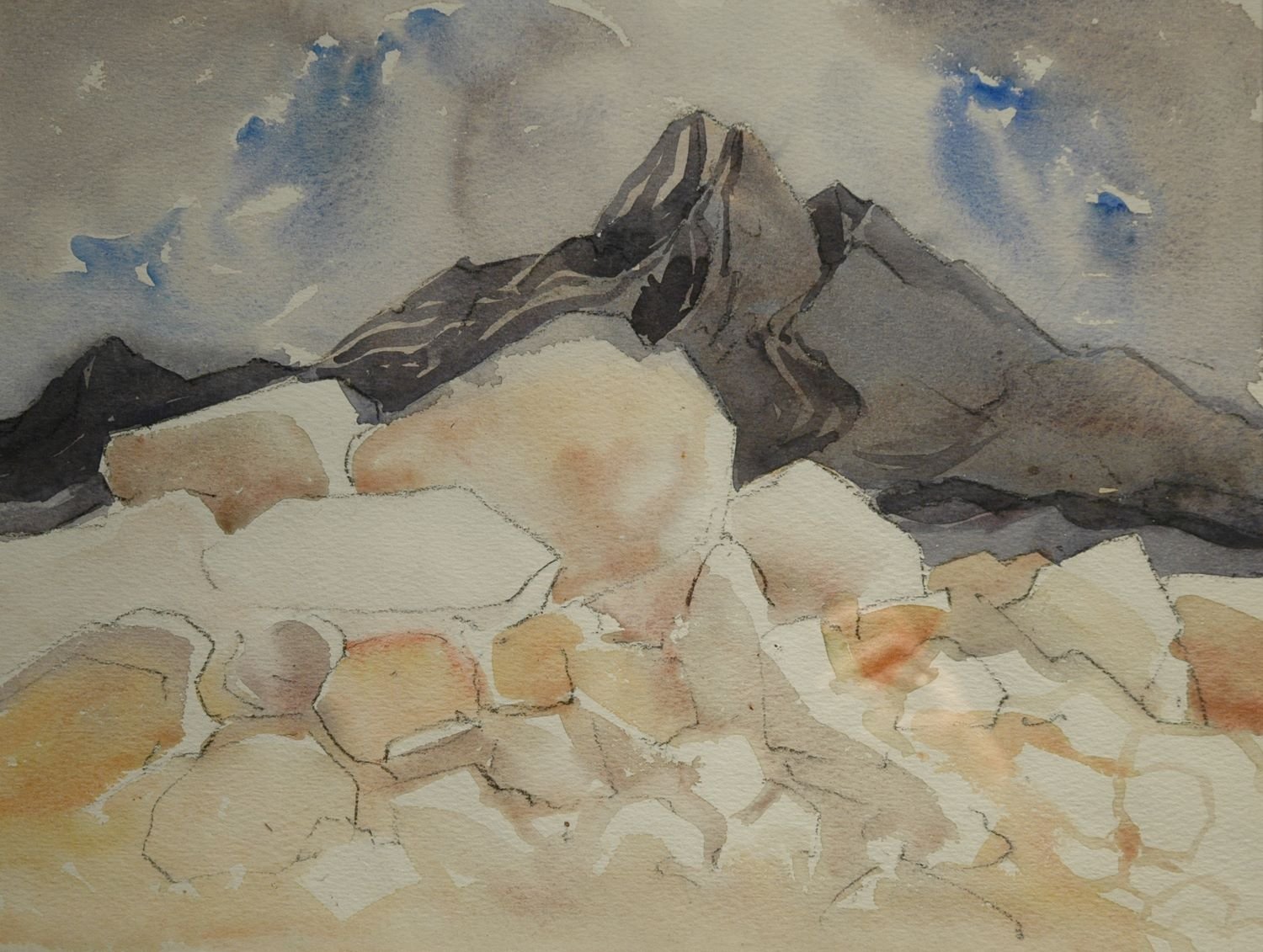
untitled (Rockies), c.1970, watercolor on paper, sold.
…exaggerated and abstracted form…
Glyde’s intent, along with fellow artists such as Maxwell Bates and Illingworth Kerr, was to develop a distinct view of Western Canada. Therefore, rather than straightforward representations of realistic scenes, he wished to convey the greater meanings that he found within this context through the exaggerated and abstracted forms of a modernist agenda. His visual referents of the landscape contained his distinctive rhythms of both form and color. According to Patricia Ainslie, Glyde was
"…committed to the development of a truly Canadian art, based on direct observation and interaction with the landscape and the people…He laid emphasis on the figure as a means of exploring the Canadian spirit, and created a body of work that with its mythological and symbolic character broke new ground in the West (Ainslie:16)".[1]
Glyde was born on 18 June 1906 in Luton, England. He attended the Royal College of Art 1926-30. In the School of Design, he received a scholarship for Architectural Decoration. He graduated as an Associate of the Royal College of Art (A.R.C.A.). From 1929-35 he taught in the evenings, at Croydon School of Arts and Crafts and Borough Polytechnic, London, and full-time at High Wycombe School of Arts and Crafts. Meanwhile, he and A.C. Leighton traveled around England painting landscapes. Glyde came to Canada in 1935 to teach at the Provincial Institute of Technology and Art, now the Alberta University of the Arts (Calgary).
In November of 1935, Glyde joined the Alberta Society of Artists (ASA) – he was president from 1936-47. In 1936, Glyde became Head of the Art Department at the Institute and held that position for ten years. He was head of the painting division of the Banff School of Fine Arts from 1936-66. For the Faculty of Extension, University of Alberta, 1937 to c.1951, he taught art in different communities around the province, such as Medicine Hat, Peace River, and Vegreville. In 1943, Glyde and A.Y. Jackson were commissioned by the National Gallery of Canada to document the building of the Alaska Highway. They traveled throughout Northern Alberta, British Columbia and the Yukon, the experience and the landscape influenced Glyde greatly.
From 1946-66, he established and organized the Division of Fine Art at the University of Alberta. In 1946, he became an Associate Professor, and taught in the B.A. and B.Ed. programs, and in 1951, he became a Professor of Fine Arts. In 1950, he was appointed Curator of the University Art Gallery and Museum. He held many other roles, such as Vice President and Alberta representative to the Canadian Arts Council, the National President of the Federation of Canadian Artists, and Chairman of the Alberta Visual Arts Board. He was elected to the Royal Canadian Academy (RCA) in 1950. Glyde received a University of Alberta Honorary Doctor of Laws in 1982. Glyde's career was closely tied to the development of art and the growth of art organizations and institutions in Alberta.
Glyde retired in 1966 and, with his wife, moved to Pender Island, BC. Glyde continued to paint and find inspiration on the west coast of Canada and with frequent visits to Alberta and England. H.G. Glyde died in 1998.
Selected Collections:
Glenbow Museum, Provincial Museum of Alberta, Edmonton Art Gallery, National Gallery of Canada, University of Alberta, Medicine Hat Library, St. Patrick’s Roman Catholic Church in Medicine Hat, numerous private collections in Canada, the United States, and Europe.
[1] Ainslie, Patricia. A Lifelong Journey. The Art and Teaching of H.G. Glyde. Calgary, AB: Glenbow Museum, 1987.
